Dark romance, architectural drama, and a sly sense of danger can live quite happily beside tomatoes and tulips—you just need the right Gothic garden moves. From hard-edged iron arches to whispering pools of black water, the twenty ideas below weave color, structure, fragrance, and wildlife into an atmosphere that feels both timeless and deliciously uncanny. Pick the inspirations that match your plot size and climate, then layer them to build an outdoor room that thrills by day and haunts (in the best way) after dusk.
1. Wrought-Iron Archway Frames the Garden in Gothic Grace

A soaring, peaked metal arch summons cathedral geometry outdoors while giving climbing plants a vertical runway. Choose a powder-coated black Gothic arch and sink it deep for stability; its pointed silhouette echoes historic church windows and sets the mood the moment visitors step inside your garden. Train repeat-flowering, dark-petaled climbing roses such as ‘Florentina’ or ‘Veilchenblau’ up the ribs so the structure drips with scent and shadow-toned blooms from spring into frost. Keep stems tied in a horizontal fan to encourage more lateral flowering, and underplant with silver lamb’s ear to catch falling petals.
2. Black-Flowering Jewels Dial Up the Drama
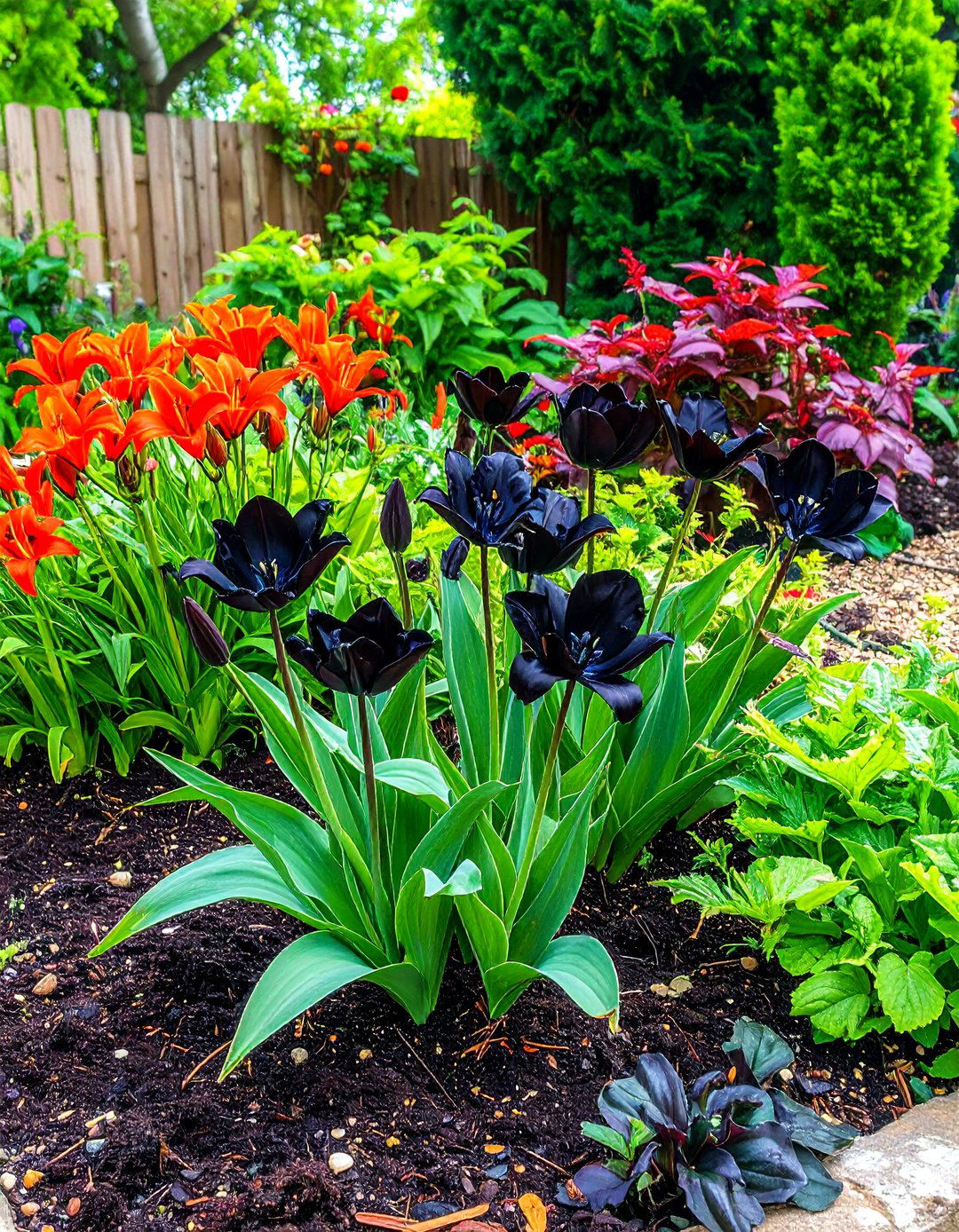
Surprisingly, true black blossoms exist—and sprinkling them through planting pockets instantly shifts a garden’s palette from cheery to brooding. Seek out near-black tulips, poppies, and lily cultivars, or sow heritage hollyhock ‘The Watchman’ for towering ink-stained spires. Even compact choices like ‘Night Rider’ lilies or pansies in pansy-black add contrast against lighter foliage. Cluster these blooms rather than dotting them singly; massing intensifies their velvet tones and stops them disappearing into the greenery. Pair with chartreuse companions so every ebony petal reads like calligraphy against neon paper.
3. Inky Foliage Plants Create Lasting Shadow
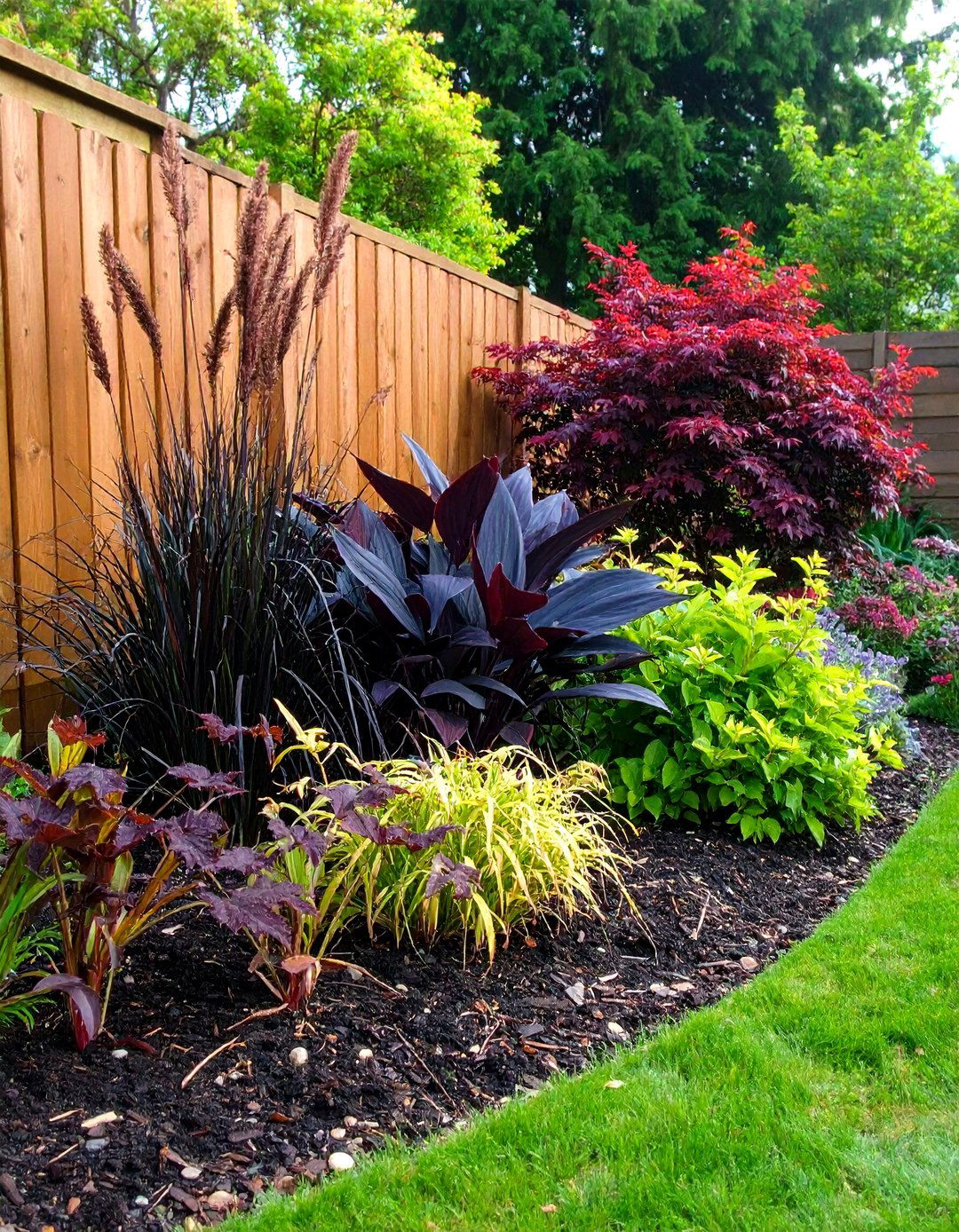
Petals fade, but leaves persist—so anchor beds with perennials whose foliage stays deep plum or soot black all season. Black mondo grass, Aeonium ‘Zwartkop’, and Sambucus ‘Black Lace’ hold saturated hues even in high sun, giving your garden its moody backbone. Weave these plants through borders the way a painter shades a canvas: dark accents recede, making bright greens pop and the entire scene feel deeper. Tuck low growers along paths to brush ankles, then repeat taller specimens at the back for rhythm.
4. Stone Gargoyles Guard the Beds
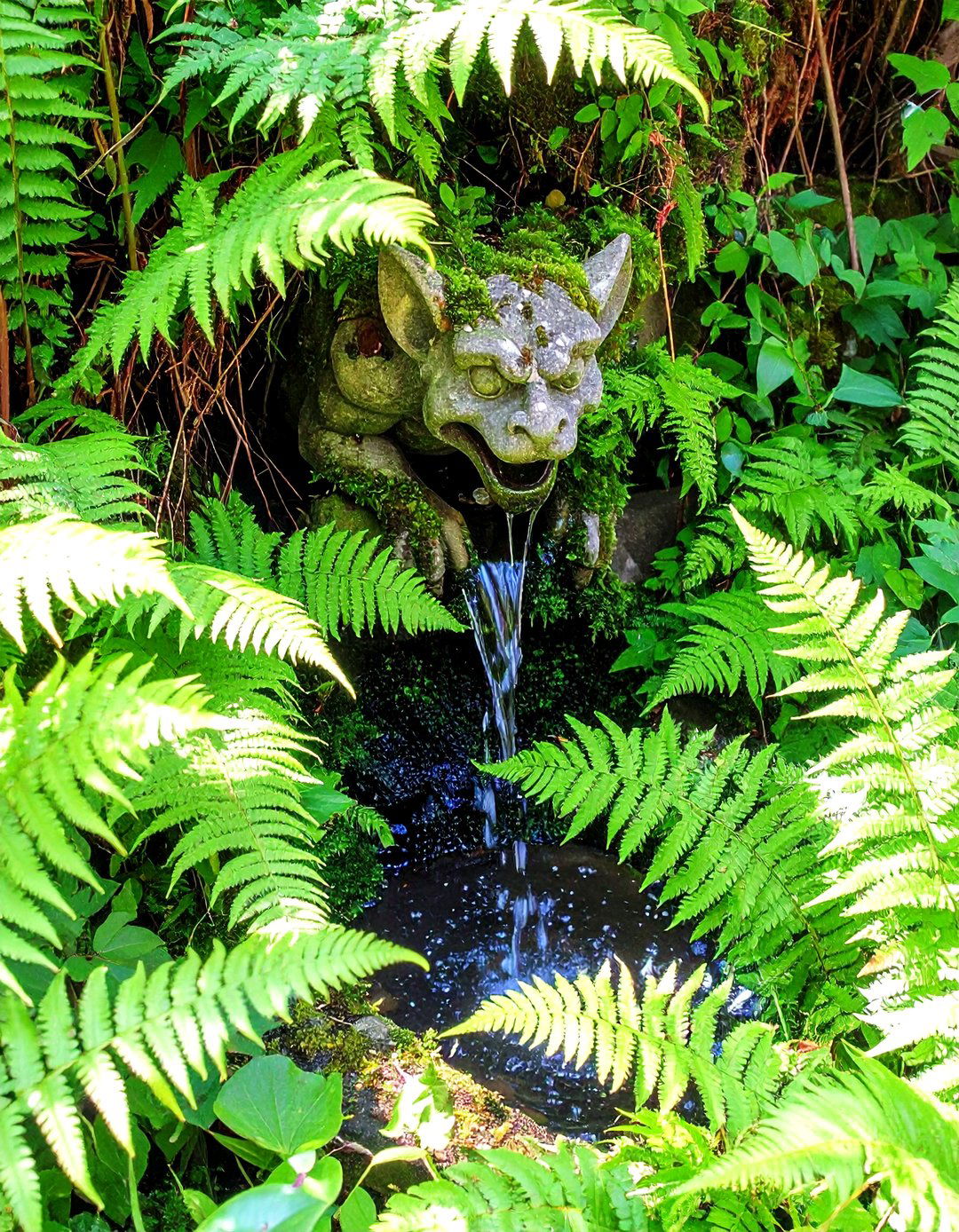
Nothing telegraphs Gothic faster than a leering gargoyle crouched beside your fountain. Originally crafted in 12th-century Europe to channel rainwater from cathedrals, these grotesques now serve pure theatrical flair in the garden. Nestle one half-hidden among ferns so its face reveals itself only when you round a corner; the surprise triggers that delightful shiver you’re after. Choose frost-proof cast stone and let moss colonize over time for authenticity.
5. A Pocket Poison Garden Adds Intrigue

Inspired by the famous Alnwick plot, cage a small bed behind an iron gate and grow historically toxic beauties—wolfsbane, digitalis, or castor bean—clearly labeled for education, not consumption. The fenced-off space heightens suspense and offers a teachable moment about ethnobotany. Keep children or pets out, install an information plaque, and cluster soothing plants like lavender nearby to balance the vibe.
6. Mirror-Black Water Feature Deepens Reflections

Swap cheerful koi ponds for a still, inky pool: a black HDPE liner or pond dye turns ordinary water into a liquid obsidian mirror that doubles clouds and crescent moons. Keep the basin geometric—square or cruciform—for church-yard gravitas, and ring the edge with midnight mondo grass so the boundary blurs. Minimal aeration preserves the glassy surface; a single drip stone adds subtle sound without rippling the reflection.
7. Ivy-Clad Walls and Meandering Paths Invite Mystery

Classic Gothic stories hide secrets behind crumbling, vine-sheathed masonry. Build low stone walls or salvage brick pillars, then encourage English ivy or climbing hydrangea to soften the hardscape and hint at age. Lay curving pea-gravel paths that vanish behind vegetation—your garden feels larger when each bend conceals the next vignette. Resist straight lines; ambiguity is the friend of suspense.
8. Lanterns and Uplights Cast Enchanted Shadows
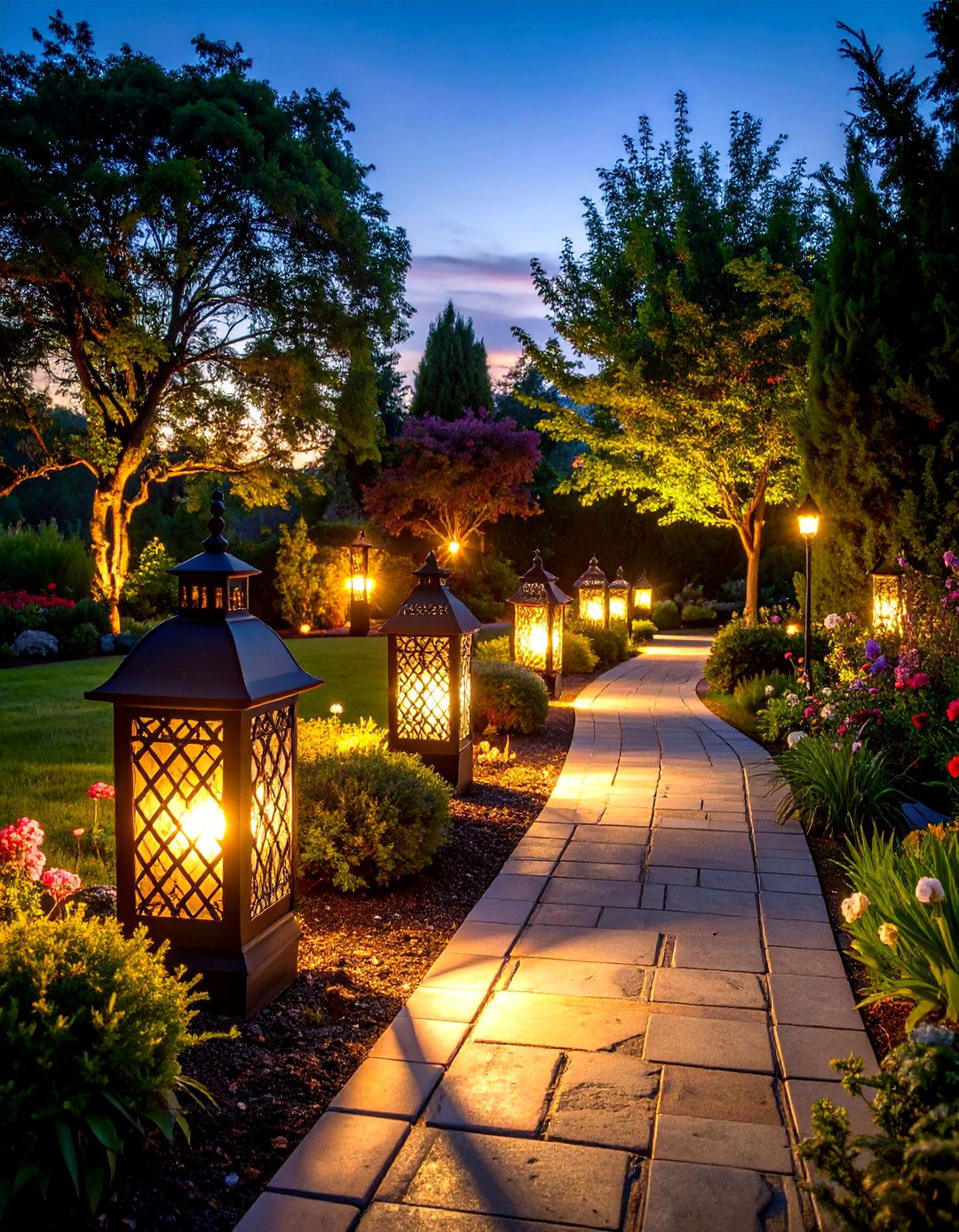
With dusk, lighting takes over the narrative. Mix wrought-iron lanterns fitted with amber LEDs for candle-like flicker with low-angle uplights that silhouette spiky yuccas or ancient trunks. Hide fixtures to avoid a “theme park” glare and favor warm temperatures (around 2700 K) to keep tones candle-soft. Gas-flame sconces, if code allows, add gothic authenticity and a whiff of brimstone.
9. Midnight Mulch Unifies the Color Scheme

Dressing beds in jet-black wood mulch instantly amplifies pale blooms and mirrors nearby dark foliage. Besides aesthetics, dyed black mulch suppresses weeds, retains soil moisture, and slightly warms cool soils in spring—ideal for heat-loving ornamentals. Apply a two-inch layer and refresh annually to keep the hue saturated; organic dyes fade gracefully rather than leaching harmful chemicals.
10. A Cast-Iron Bench Becomes a Brooding Nook
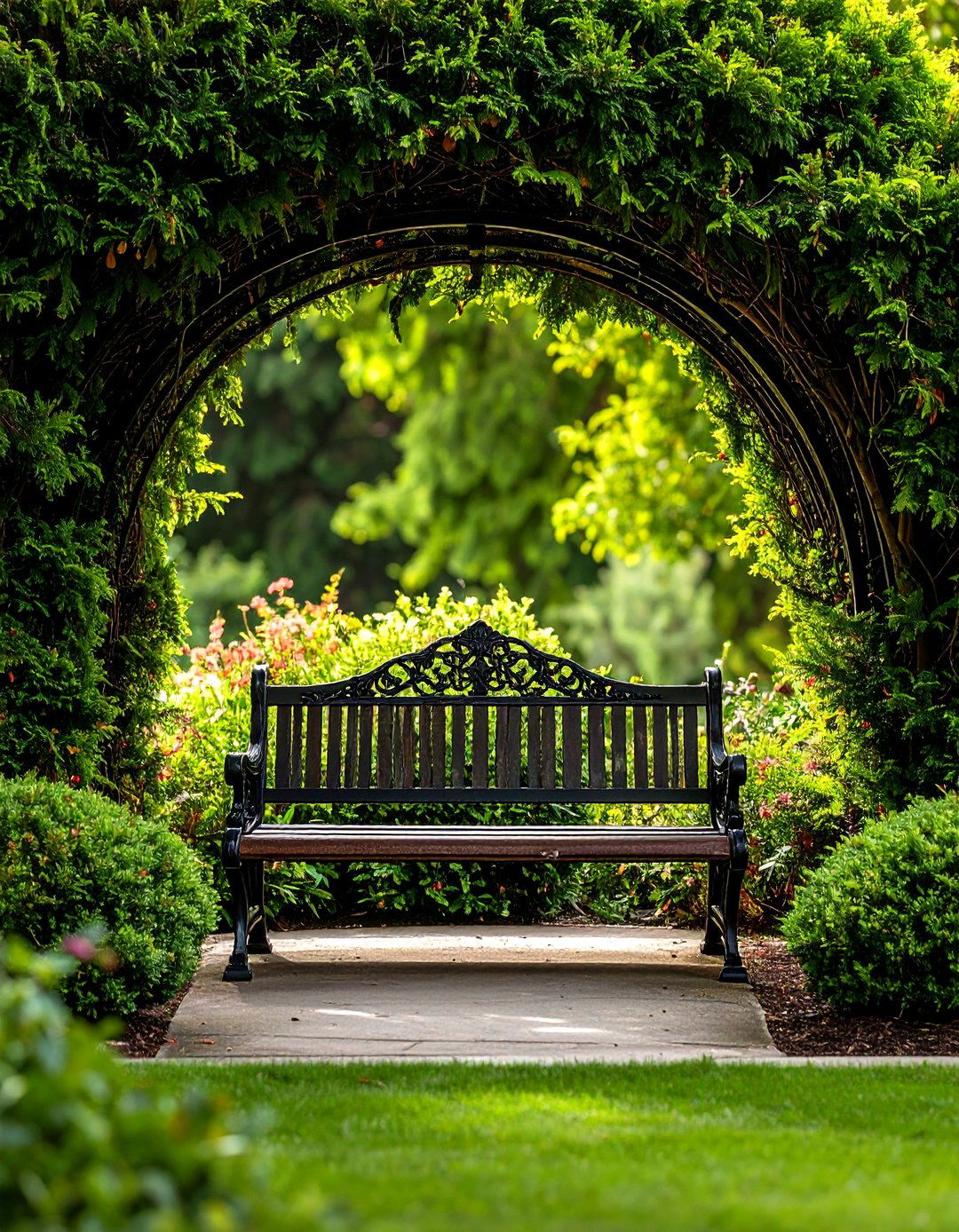
Place a Victorian revival iron bench beneath an arching yew to create a contemplative seat that feels lifted from an old cemetery. Scroll-work sides echo cloister tracery, while the metal’s dark patina blends into dusk. Plant fragrant nicotiana or night-scented stock nearby so evening visitors sit longer, enveloped in perfume and shadow.
11. Moon Garden Glows Against the Gloom
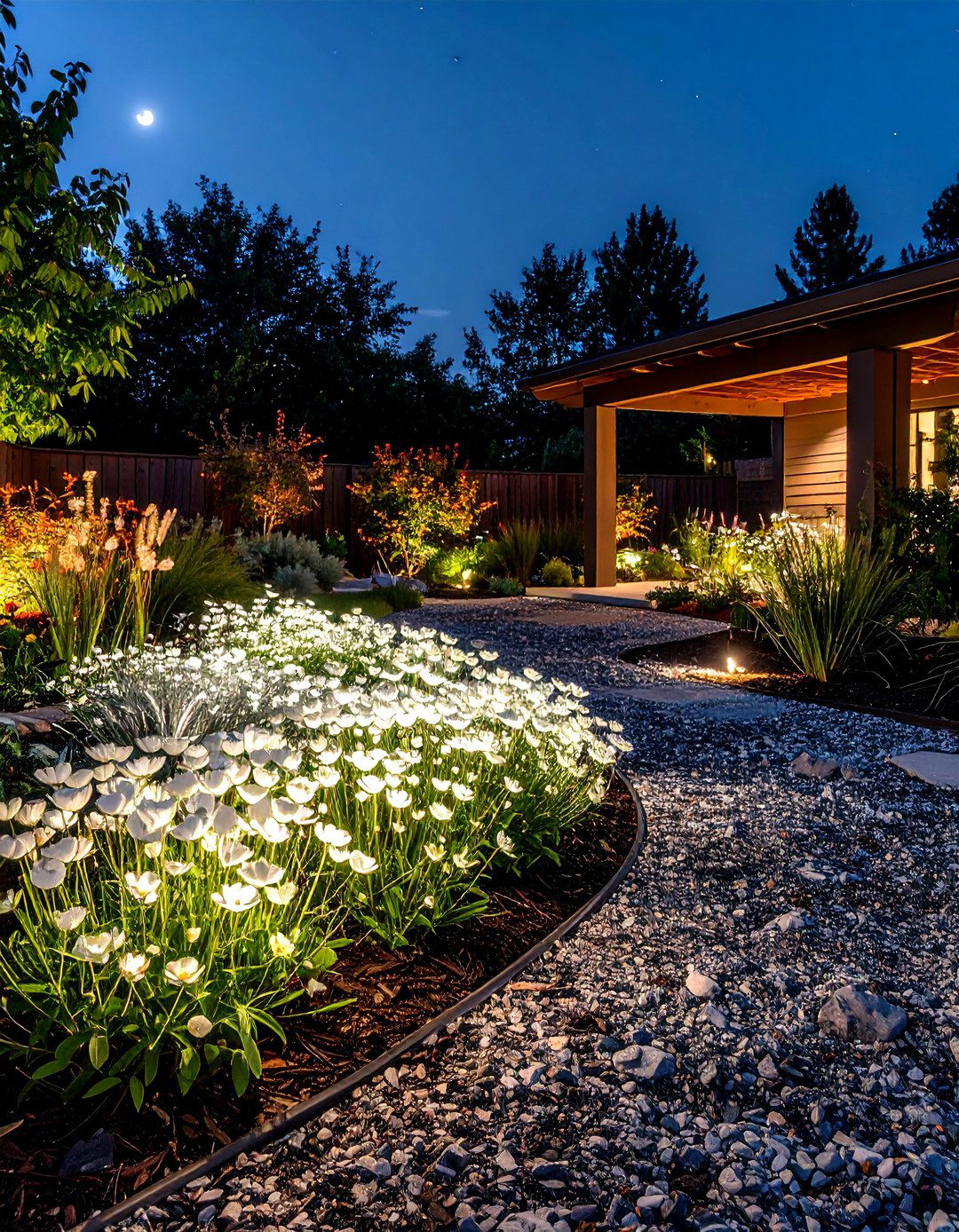
Contrast amplifies darkness, so carve out a small moon garden packed with silver foliage and night-blooming white flowers—moonflower vines, lamb’s ear, and sweet alyssum reflect lunar light and lure moth pollinators after sunset. Encircle the pale bed with black mulch or slate chips to heighten the chiaroscuro. Position it near a path so its fragrance guides guests without bright lighting.
12. Obelisks Dressed in Dark Climbers Add Height
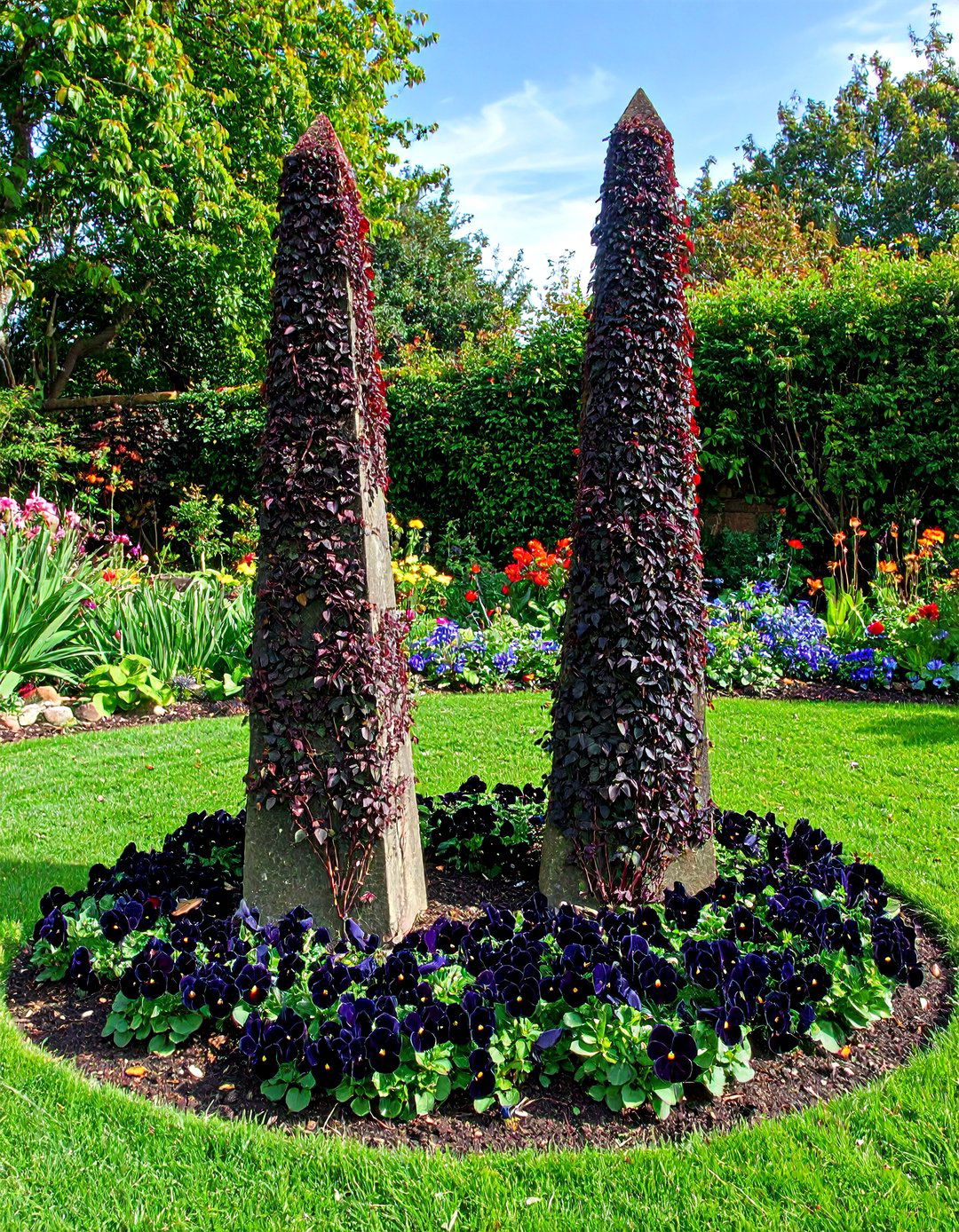
Obelisks or slender trellises punctuate the garden like miniature spires. Let chocolate sweet potato vine or blood-red clematis scramble up, weaving a living tapestry of near-black leaves and crimson petals. Arrange three obelisks in a staggered triangle for a ruined-abbey feel, and underplant with black pansies to catch fallen petals.
13. Cemetery-Style Statuary Contributes Melancholy Beauty

Marble angels, weeping maidens, or weathered obelisks evoke Victorian burial grounds and lend your garden gravitas. Anchor statues amid ornamental grasses so plumes sway like incense smoke around silent stone. A quick yogurt-and-moss wash (one cup yogurt blended with handfuls of moss) hastens the patina, softening new sculpture into haunting antiquity.
14. Italian Cypress Spires Echo Cathedral Columns

Plant Cupressus sempervirens in singles or flanking alleys to shoot arrow-straight skyward, mimicking flying buttresses and framing views with stern verticality. Their narrow footprint fits even small plots while providing evergreen structure year-round. Under-light bases to emphasize the columns after dark, and prune sparingly; lean silhouettes deliver the strongest Gothic line.
15. Shaded Corners of Ferns and Hostas Offer Lush Contrast
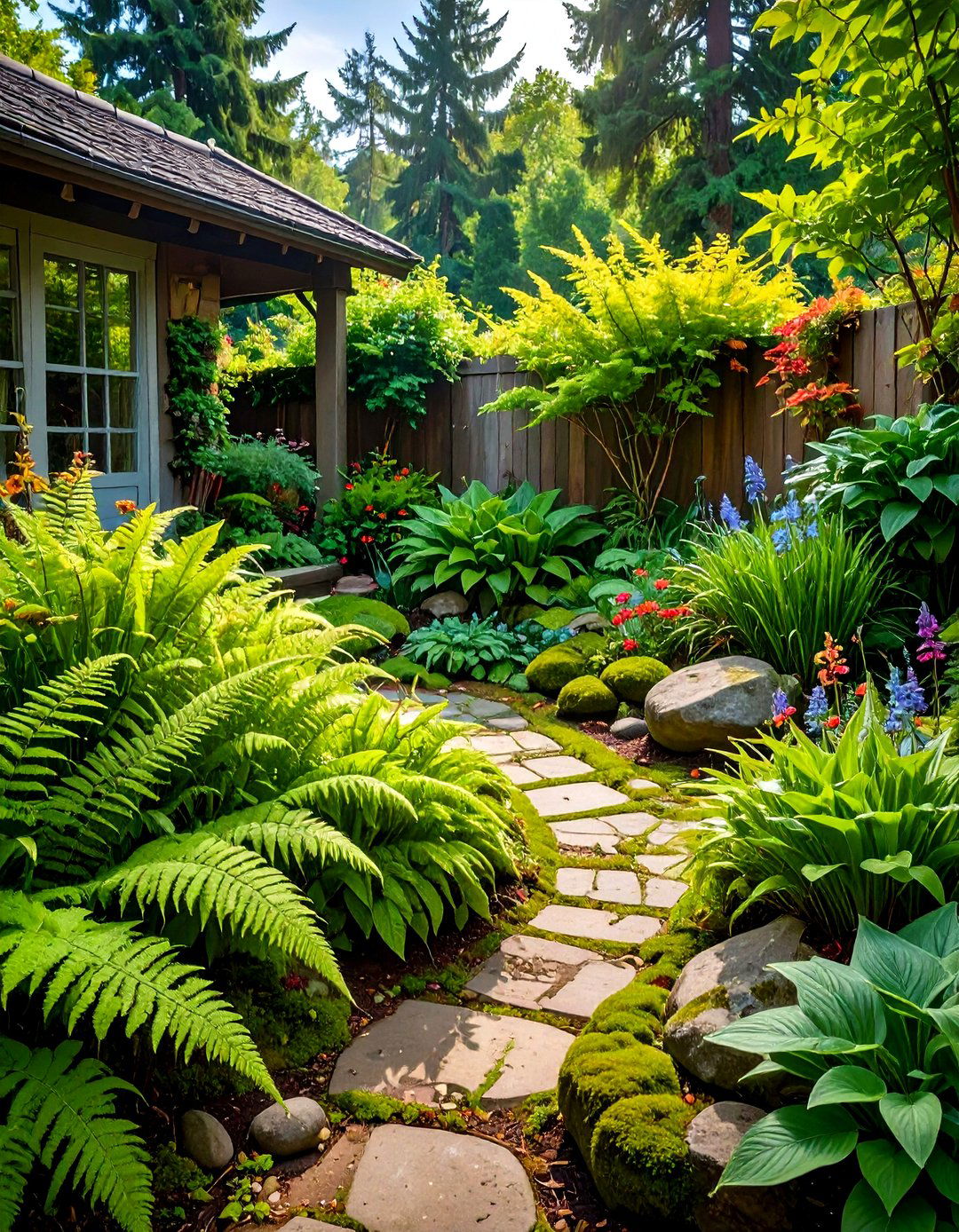
Not every Gothic space is sun-drenched. In moist shade, mass maidenhair fern with dark-stemmed bleeding hearts and blue-tinted hostas for a cool, cloister-garden mood. Let decaying log edging and scattered moss stones complete the monastic vibe. The feathery textures temper harder elements like iron fencing while sustaining interest through summer heat.
16. Ultrasonic Foggers Summon Eerie Mists

Hide a floating pond fogger beneath the reflective pool and, at the flick of a switch, veil the surface in low-lying mist that drifts through spotlight beams—a theatrical flourish guests won’t forget. Most units plug into standard power, use minimal water, and can cycle on dusk timers. For safety, position away from walkways and keep cords concealed.
17. Dark Ornamental Grasses Animate the Scene

Motion is vital in a still tableau. Choose cultivars like Pennisetum ‘Vertigo’ or the aforementioned black mondo grass whose near-purple blades ripple with every breeze, adding softness to stone and metal. Plant in swathes rather than isolated clumps so the effect feels like velvet waves rolling across the garden floor.
18. Iron Candelabra Line a Candlelit Path
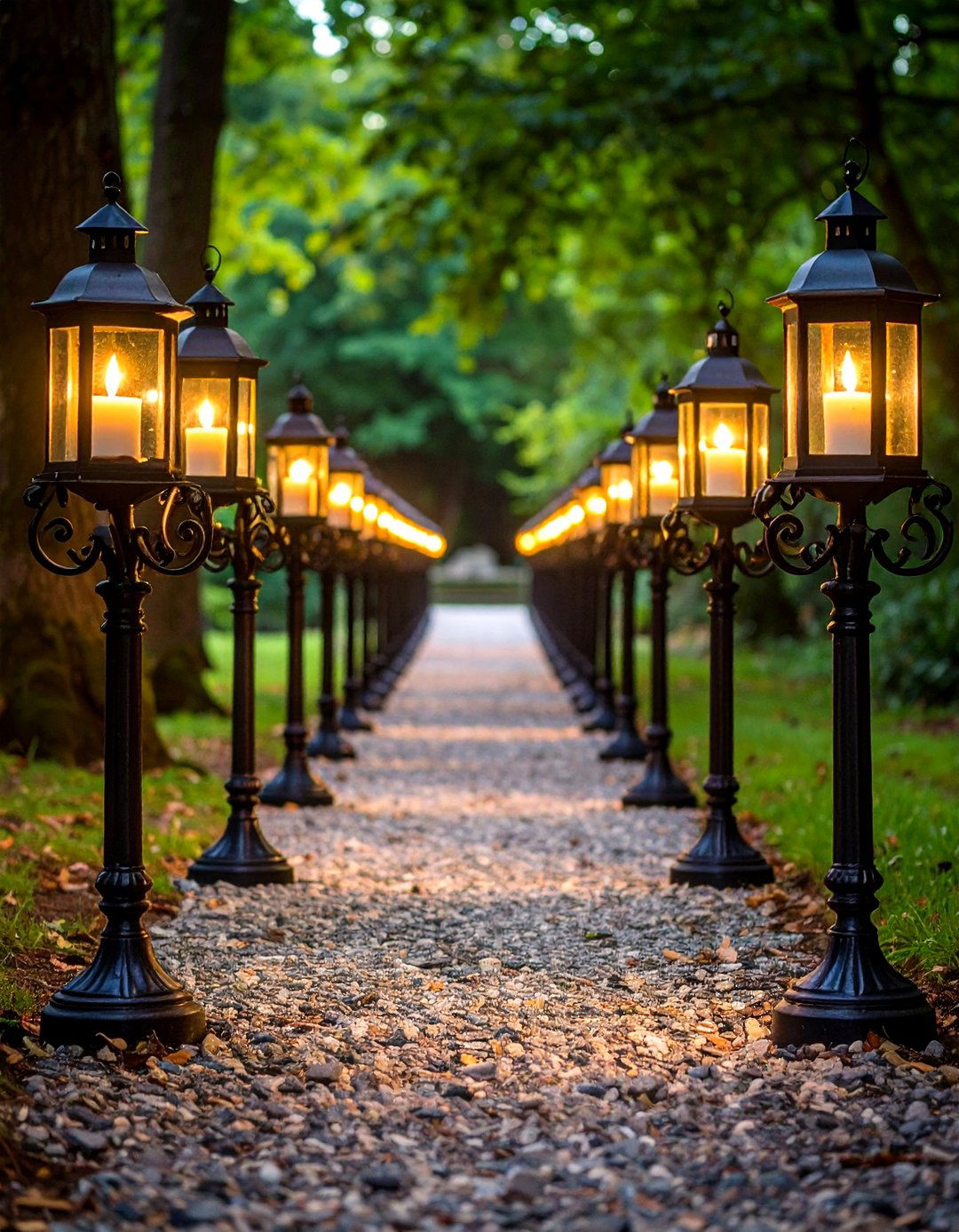
Forged-metal floor candelabra, spiked into gravel, transform ordinary paths into processional aisles. Fill hurricane chimneys with battery tapers for safer glow during parties; warm LED flames sidestep wax drips and windouts while preserving Gothic ambience. Space fixtures unevenly to keep shadows dancing and encourage slower, more mindful strolling.
19. Hanging Baskets Trail Midnight Vines and Blood-Red Blossoms
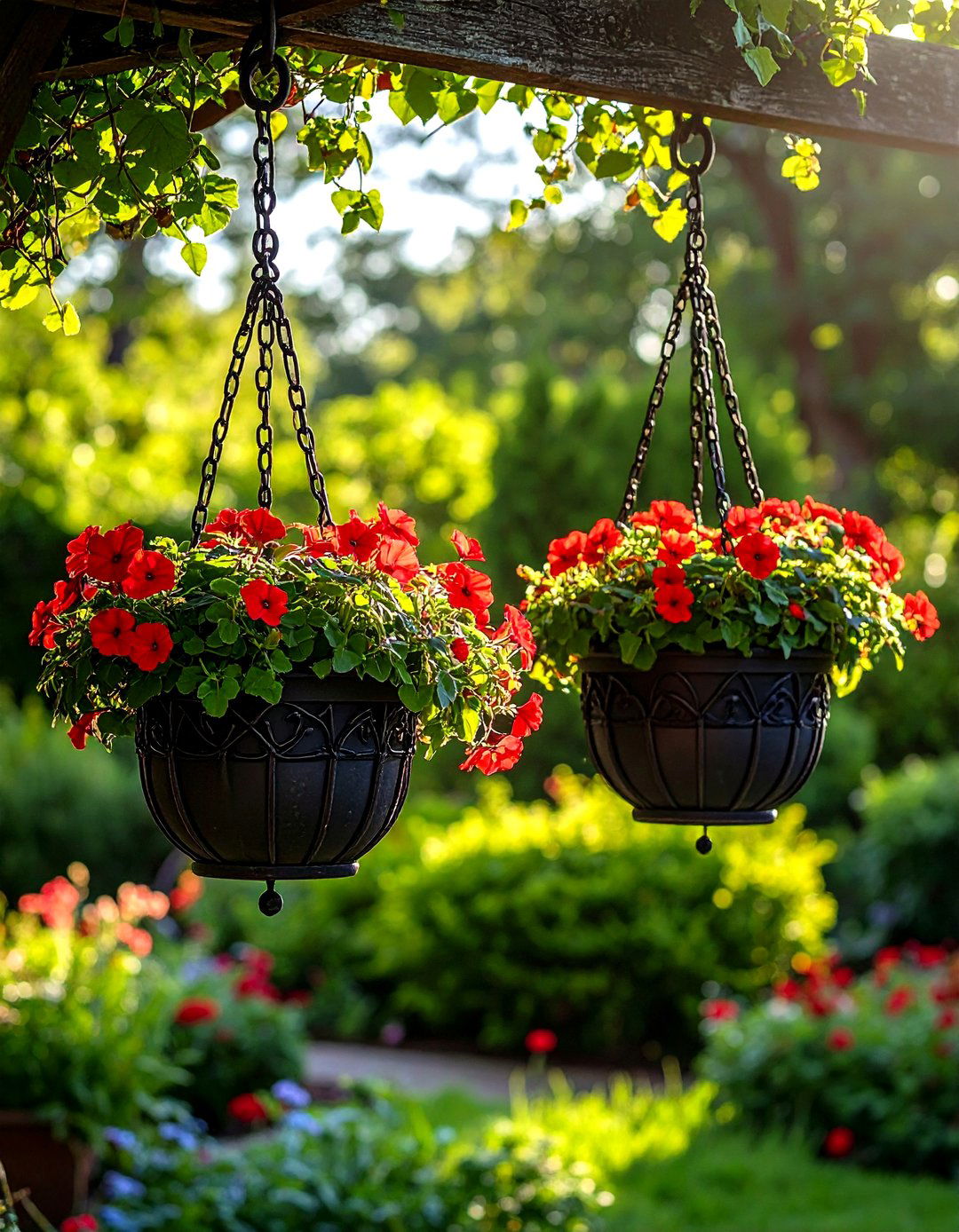
Suspend wrought-iron baskets from pergola beams and let black sweet potato vine cascade down, weaving with trailing crimson begonias or petunias. The living drapery frames seating zones like heavy velvet curtains, intensifying garden intimacy. Feed monthly with a high-potash fertilizer to maintain flower production and prune lightly if vines threaten to smother companions.
20. Welcome Bats and Ravens for Authentic Gothic Wildlife

Every Gothic narrative needs winged silhouettes. Install bat boxes on warm south-facing walls to attract mosquito-gobbling little brown bats, and leave dense evergreens for corvid perches. Night-scented flowers from the moon-garden supply moths—prime bat food—while uplights grazing tree trunks set the stage for their twilight flights. Encouraging these creatures folds ecological stewardship into your dark romance.
Conclusion:
A Gothic garden is less about following rigid rules and more about orchestrating tone—shadow against light, vertical thrust against tumbling vines, serenity against a dash of theatrical menace. By mixing architectural ironwork, somber colors, reflective water, and moody lighting with plants that celebrate both darkness and bloom, you can craft an outdoor retreat that thrills the imagination and supports local wildlife year-round. Embrace the power of contrast, layer your elements thoughtfully, and let the garden tell its own hauntingly beautiful story.




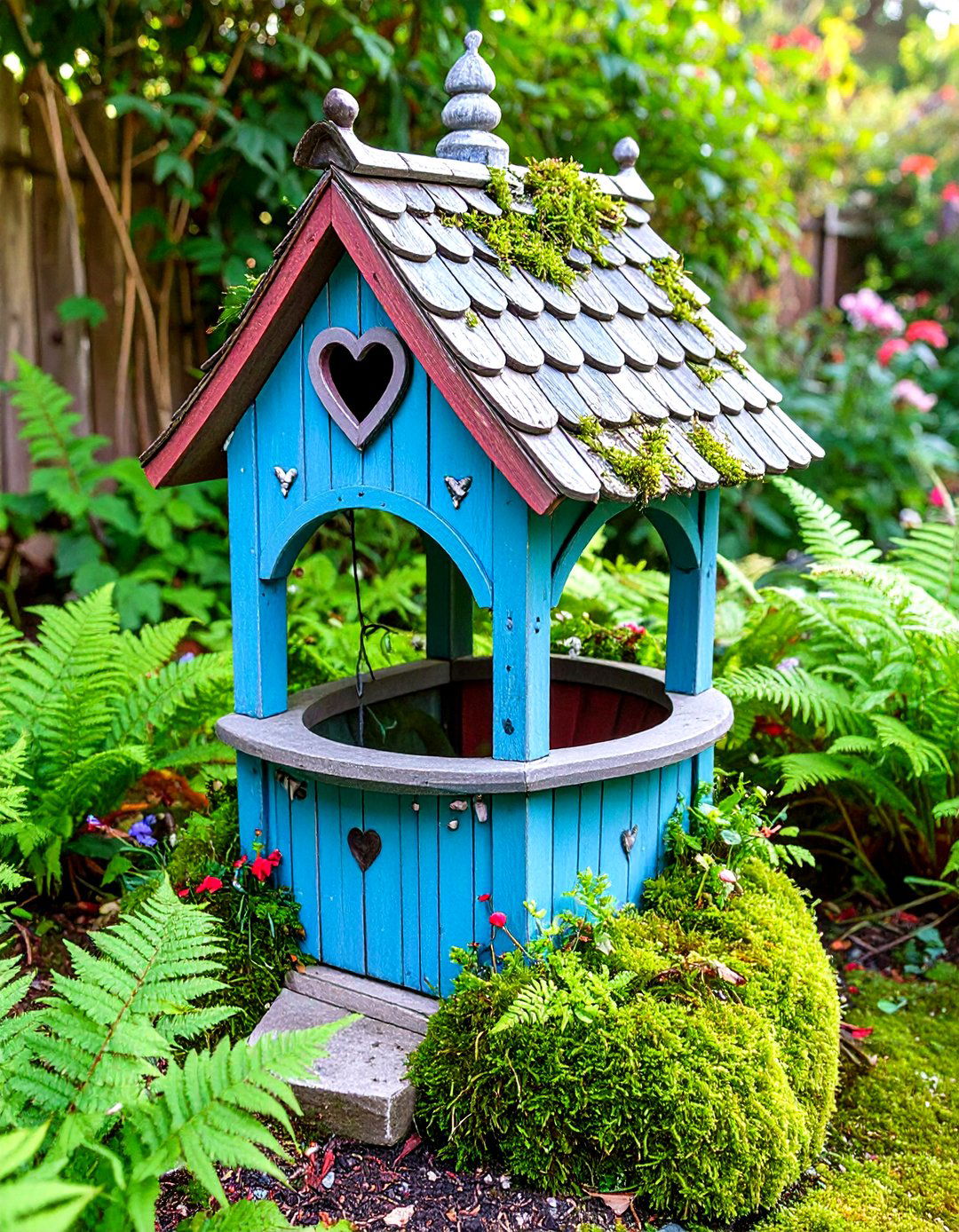
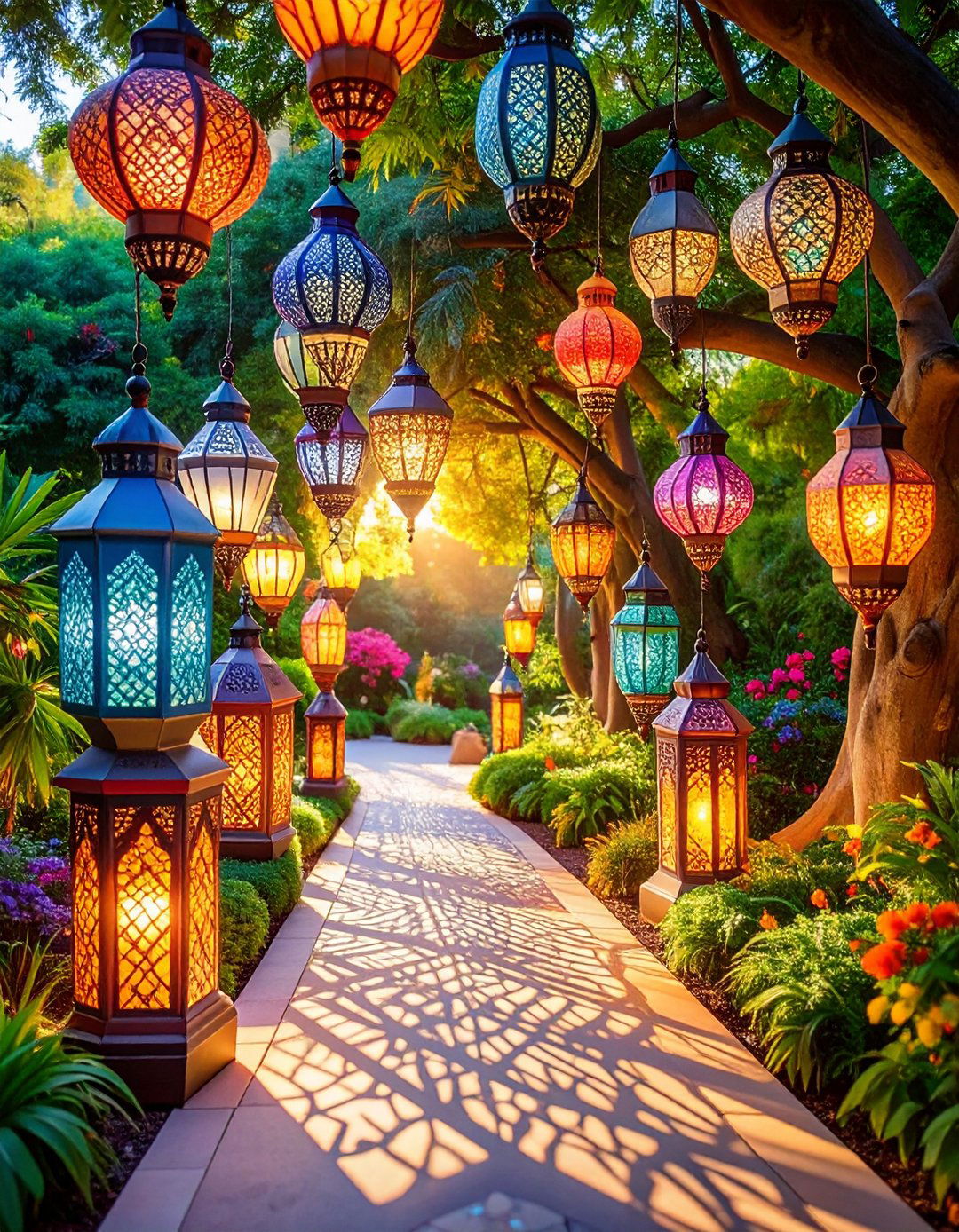
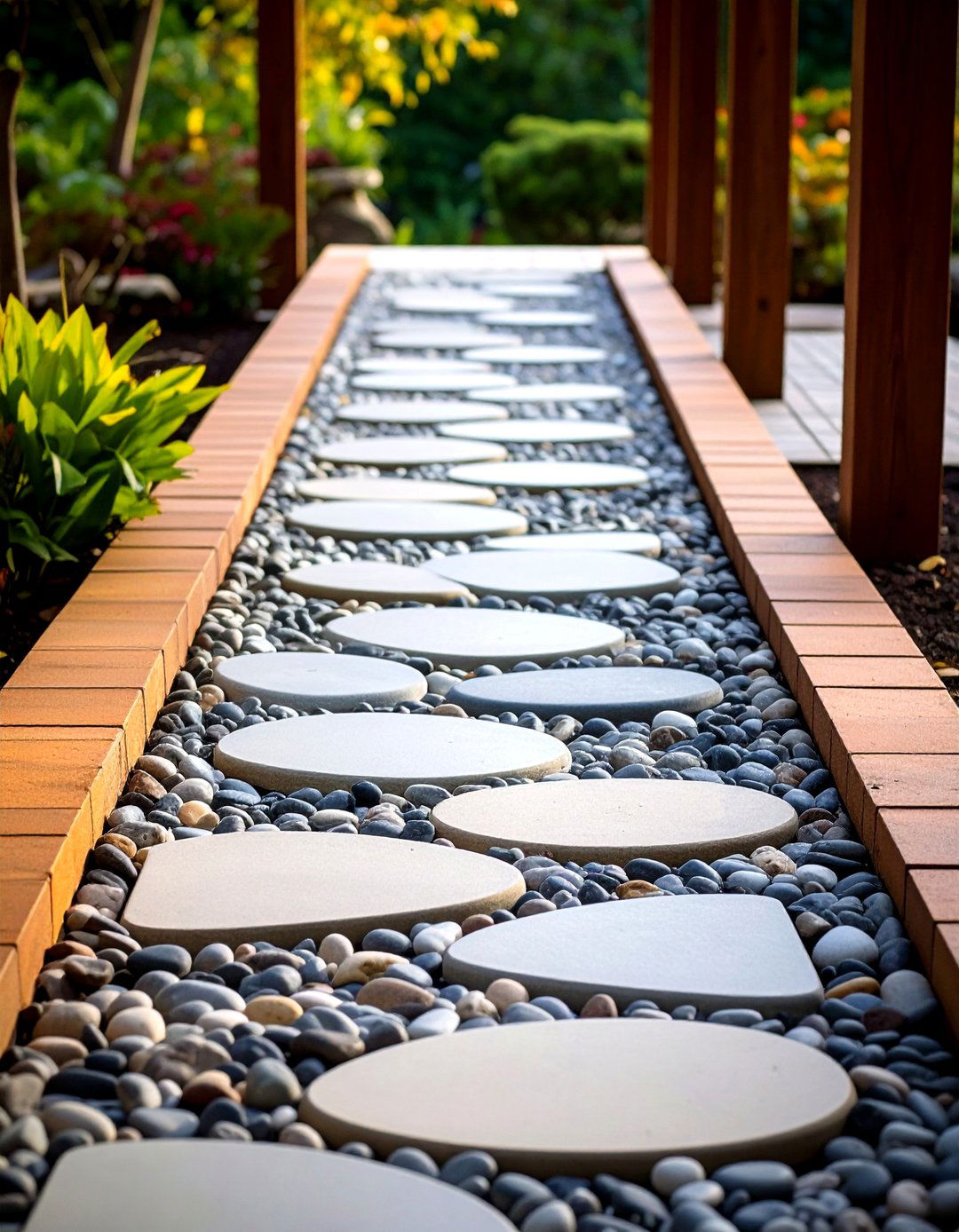
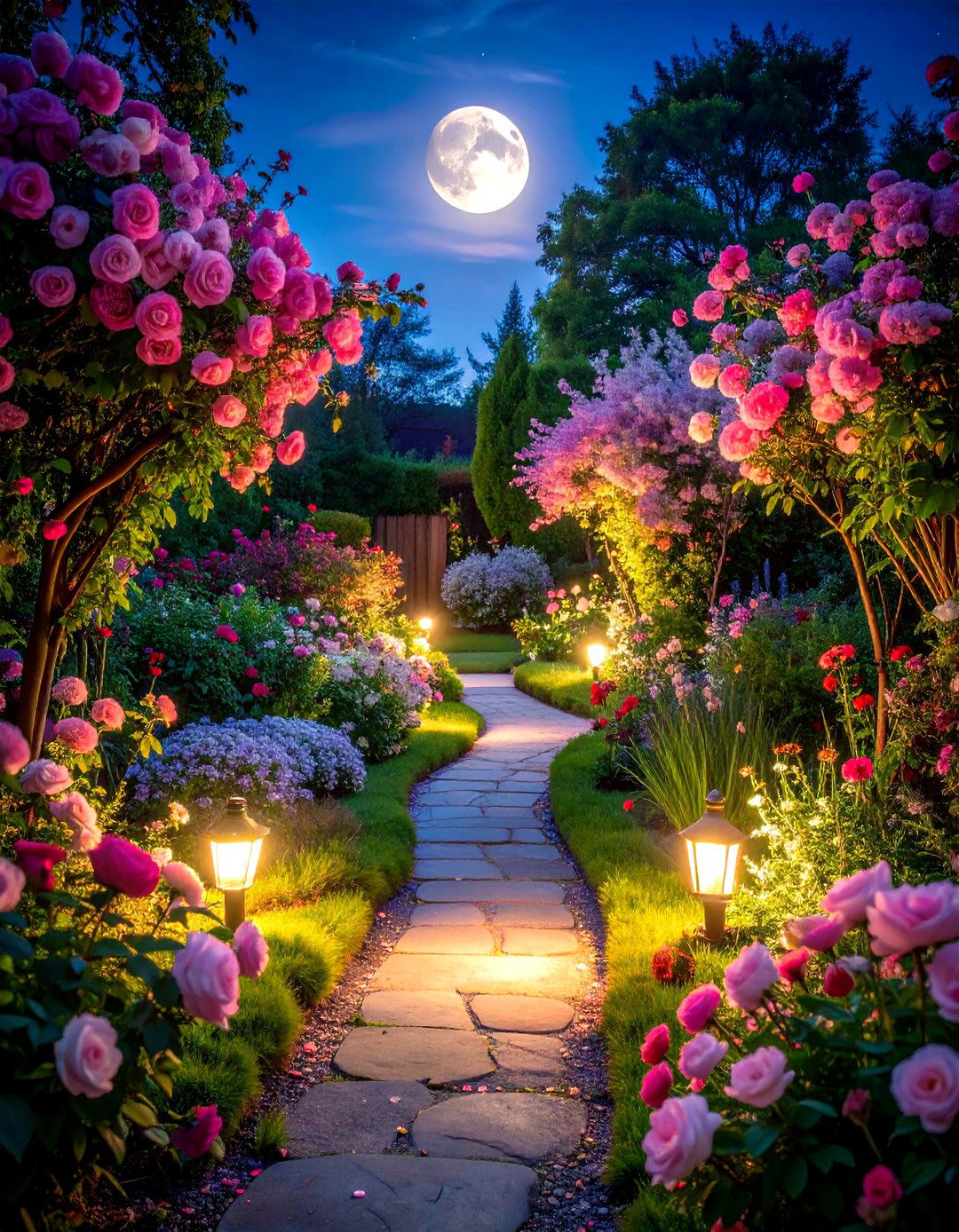

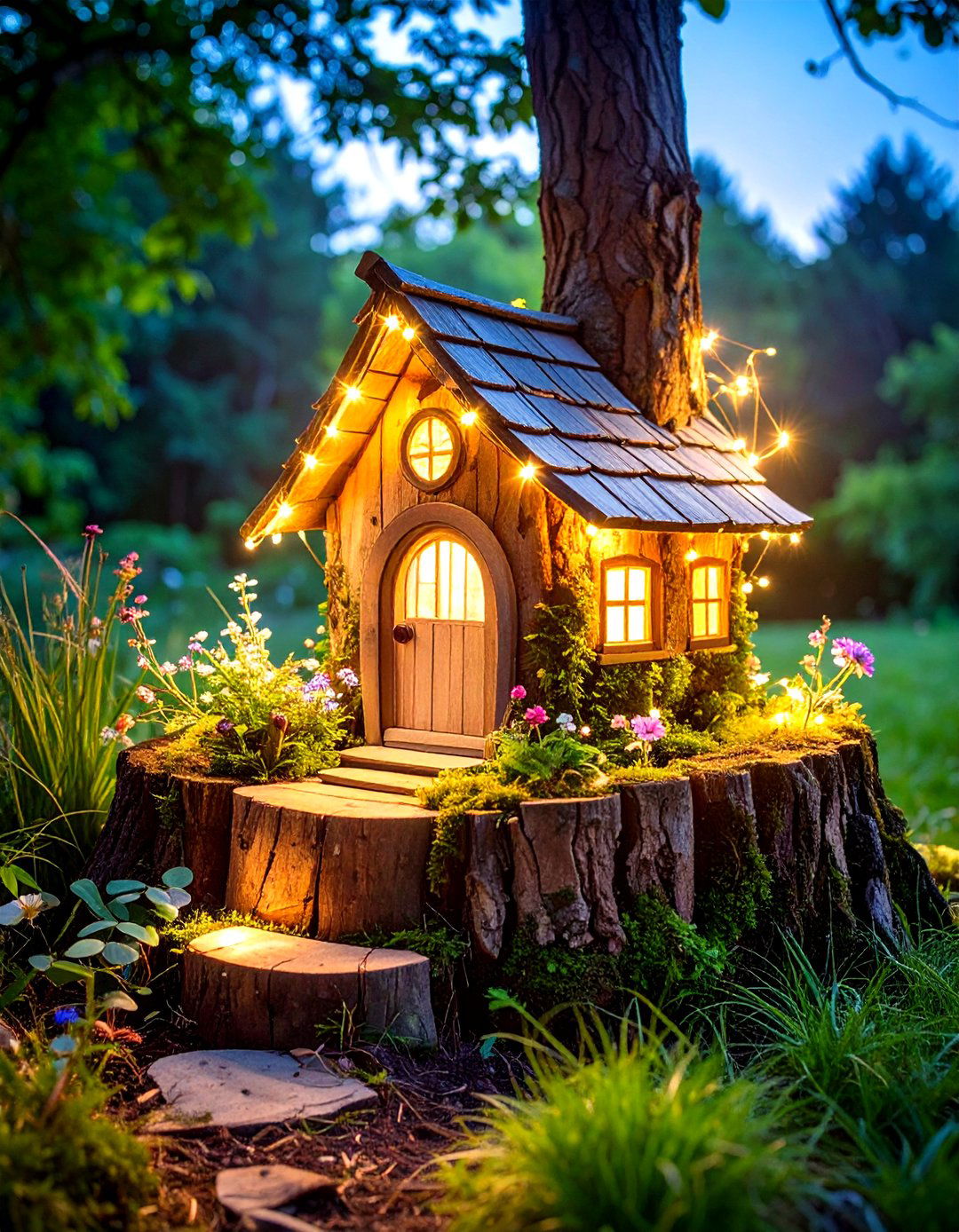
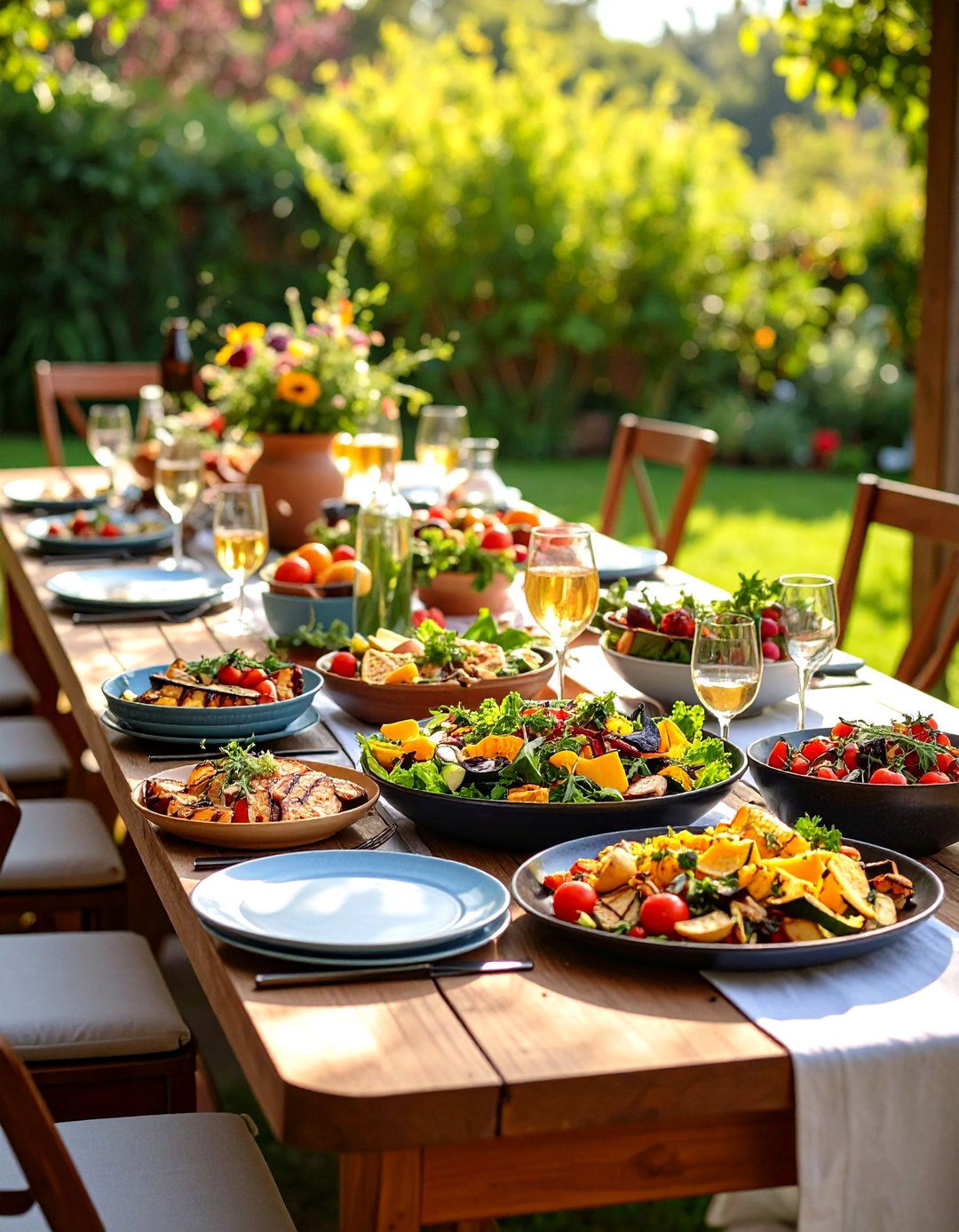





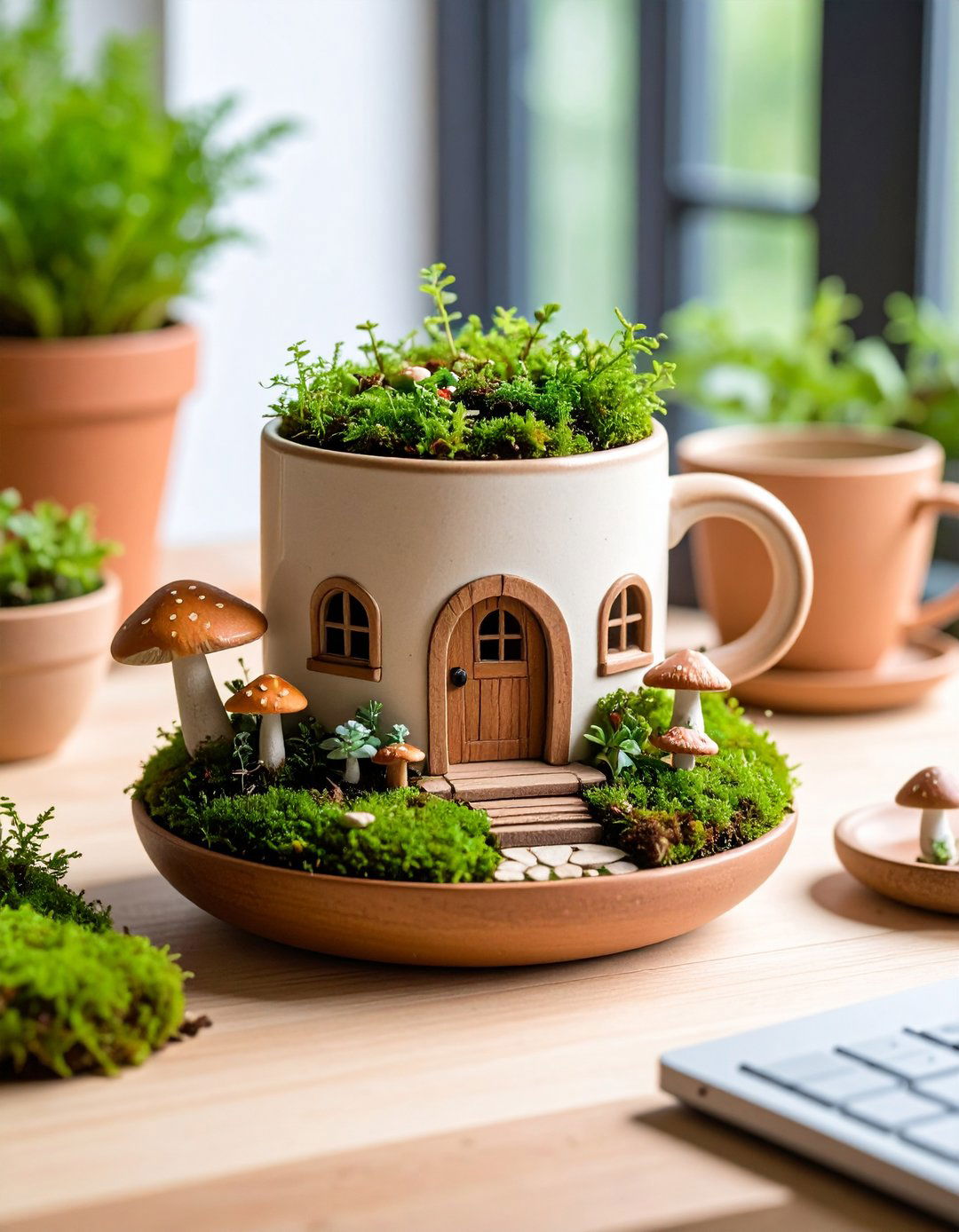
Leave a Reply